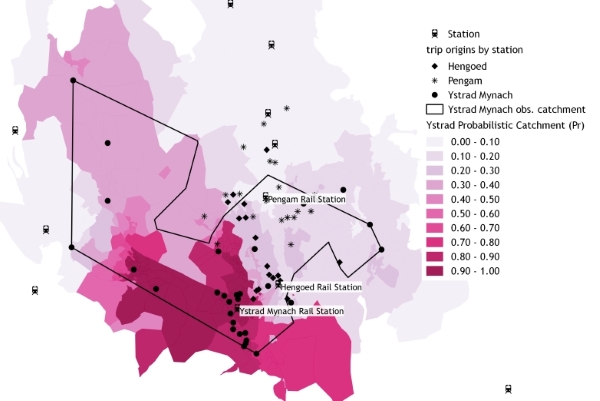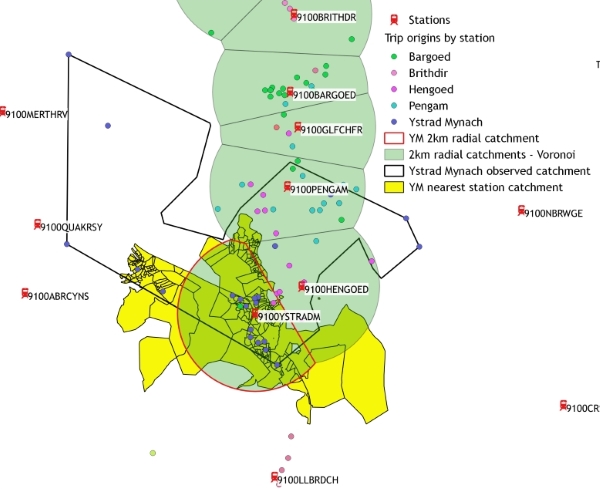It has been a busy start to the year as I've presented papers at two academic conferences.
The first was at the Universities' Transport Study Group (UTSG) 2016 conference in January, which was held in Bristol. This was also my first ever presentation at an academic conference. The paper describes the calibration of some initial railway station choice models using multinomial logit, and the application of one of the models to generate a probability-based station catchment for Ystrad Mynach station in the Rhymney Valley, Wales. For each unit postcode in the area of interest I used the model parameters to calculate the probability of each of the ten nearest stations by road distance being chosen for a trip to Cardiff Central. As the model includes on-train time as one of the variables, the catchments will vary by destination station. I then illustrated the catchment for Ystrad Mynach. I also compared this catchment with the definitions typically used in demand forecasting models - a 2km radius around the station or assigning each postcode to its nearest station. The probability-based catchment gives a realistic representation of the observed catchment (based on passenger survey data) and performs better than the simpler catchment definitions, as shown in the images below.
A large part of the work to get to this point has involved generating the variables for model calibration. I have built a multi-modal route planner to generate the variables relating to the access journey and the train leg. The planner uses the open source project OpenTripPlanner (OTP) and GB open transport data. I've written a set of functions in R to query the OTP routing API and process the response. I have done similar work to obtain data from other sources, such as train fare data from brfares.com and station services and facilities information from the National Rail Enquiries knowledge-base feeds. The details of my approach, and the framework that I have developed, formed the content of the second paper which I presented at the GIS Research UK 2016 conference in March, at the University of Greenwich.
Defining probability-based rail station catchments for demand modelling

Figure 1: Probabilistic catchment for Ystrad Mynach station to Cardiff Central and observed catchment (all destinations)

Figure 2: Nearest station, 2km radial and observed catchments for Ystrad Mynach station